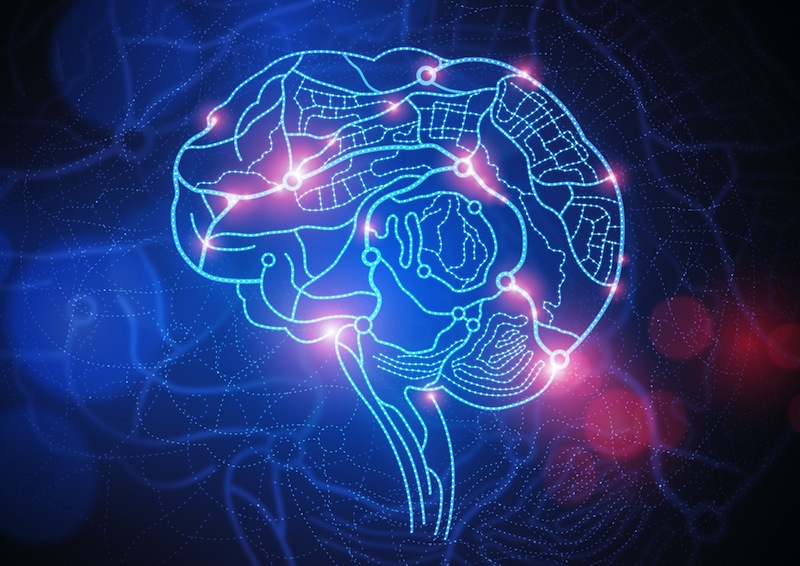
Unleashing the Power of the Bilingual Mind (Op-Ed)

Anna Beres is a graduate student in the School of Psychology at Bangor University. Beres conducted this study under Guillaume Thierry, professor of cognitive neuroscience, and is currently working with Debbie Mills, also a cognitive neuroscientist at the university. Beres first wrote about the work on the blog of the Cognitive Neuroscience Society. She contributed this article to Live Science's Expert Voices: Op-Ed & Insights.
Writing or talking about my research in English is relatively easy. I do it every day, even though my native language is Polish and I work in Wales, where I am constantly switching between English and Welsh. But whenever I try to explain my work to my family in Polish, it requires much more effort. It's not that I don't know the right words; it's that I need to understand the material at a much deeper level if I'm to be accurate. Even though I find it more difficult initially, the explanations seem to last much longer in my memory, and my understanding of the subject grows.
My experience of using — and mixing — multiple languages on a regular basis resonates in my research on bilingualism. My work measuring electrical activity in the brain finds that rather than keeping languages separate, as has been traditionally taught, people should be encouraged to decide when and which language they should use to meet their communicative needs.
Historically, using two languages in the same lesson has been considered an "academic deficiency," a lack of control over students' language skills; inserting words in the second language was seen as a gap in knowledge, an unwelcome interference. Educators commonly believed that such "cross-contamination" could hinder children's education and impact their academic growth. Therefore, although most people have considered bilingual education desirable, multiple languages within the classroom have been strictly separated by subject, different teachers, or days of the week.
Wales is a case in point: In 1911, fewer than 2.5 million people were living in Wales, and of those, almost 1 million spoke Welsh fluently. In the 1980s, that number dropped, with only about 500,000 individuals speaking Welsh. In 2011, this number increased to just under 600,000.
The reason that the number of Welsh speakers fell dramatically until the 1980s was because most of the population was focusing on the "majority" language of the "higher" status, which was English. Again, bilingual research at that time seemed to be suggesting that bilingual education might be putting children at a disadvantage compared to their monolingual peers. Therefore, parents often chose for their children to learn only English, which was the primary — and often the only — language used in schools.
Only recently, with the rise of globalization and increasing bilingualism, have scientists and educators started to question the validity of separating two languages. Not only is mixing two languages in a meaningful way not harmful to a child's learning, they realized, but the practice might be beneficial. Scholars around the world have been emphasizing the need for a new, fresh approach to bilingualism — one that enables speakers to be comfortable with their languages and to use them to enhance learning. [Learning a New Language at Any Age Helps the Brain ]
Get the world’s most fascinating discoveries delivered straight to your inbox.
My research on "translanguaging" — a term that came about in Wales towards the end of the 20th century in response to historic separation of Welsh and English — explores the benefits of mixing languages in everyday situations. Translanguaging is when students receive information in one language, and are encouraged to produce an output of their learning in another language. It is frequently confused with the broader concept of code-switching, in which bilinguals occasionally alternate their languages in a single conversation.
The idea of translanguaging is now more important than ever before. With English being the worldwide language in use, children all over the world can search the Internet or read books in English, but in their classrooms, they frequently have to produce what they have learned in their other language.
When receiving information in one language and having to produce it back in another, students need to be able to fully internalize and process what they hear in one language before they are able to use their other language to describe the message. In a typical classroom where only one language is used, it is very easy for pupils to answer questions or write a short essay based on what they heard or read without fully understanding the subject. Students can easily pick up on some key words or concepts and almost "copy and paste" the information without true understanding. Translanguaging essentially forces students to fully engage in the topic and understand it at a much deeper level.
Although this method of learning has been rising to fame in recent years, the evidence so far has been limited to qualitative studies and informal classroom observations. In my research with colleagues at Bangor University, we aimed to provide the first quantitative evidence that translanguaging is beneficial when acquiring new knowledge.
To do that, we have run the first-ever neuroscientific investigation of translanguaging using event-related brain potentials (ERPs). We recruited fully balanced Welsh-English bilinguals for the study and presented them with a novel-object learning task in which we manipulated the learning context.
We created a set of 40 novel objects, which were usually parts of a machine, or an antique object; we made sure that they were so strange and uncommon that participants would not have been likely to ever see them before. Those objects had no names, and we made up their definitions. For example, we had a golden object shaped a bit like a telephone handle, and so we said, "It is used to communicate orders in ships."
After seeing this object and its definition on a computer screen, it disappeared and participants saw a set of four familiar objects (e.g. a cow, a sailor, a piano, a tree) and had to name out loud the one that relates to the novel object via its definition. Half of the participants had to name it in the same language as the definition (monolingual context) and half in a different language (translanguaging).
Therefore, the monolingual condition involved using the same language throughout, and the translanguaging condition involved using one language at comprehension, and another at the production stage. We also made sure that the name of the familiar picture was never a part of the definition, so participants really had to understand the use/purpose of the novel object before they were able to relate something familiar to it.
After this first phase, we tested the efficiency of participants' learning in the monolingual and translanguaging contexts by showing them the picture pairs again — the novel object they learned about before followed by the associated familiar picture, as well as an unrelated picture — while measuring the participants' ERPs. We were specifically interested in the N400, the "wave" of the ERP that represents "semantic integration effort" — the larger it is, the harder the brain had to work to process the information.
In our study, if participants correctly remembered and understood the picture pairs, the N400 wave was smaller, meaning that their brains required less effort to process them. So let's say that during learning, participants learned that this strange novel golden object that looks a bit like an old telephone is associated with a sailor (because they were told that it is "used to communicate orders in ships"): In the testing phase, they would see this golden object followed by a sailor, thereby producing a smaller N400 because they knew that those two go together, but then later they would see the golden object followed by an unrelated object — say, a chair — and this would produce a larger N400 wave because the novel object was a mismatch with the chair.
This N400 testing set-up has been well-established for more than 40 years now. We have replicated this common finding, while — and this is really amazing — also finding an effect from altering the learning context, by changing the language in which the pairs were learned. We found that the N400 wave was much smaller for those objects that were taught in the translanguaging context rather than the monolingual condition.
Because each novel object was only taught in one context — in the golden object example, it was presented in either the translanguaging block or the monolingual one, but never both for the same participant — participants found that the picture-pairs learned in the translanguaging block were a lot easier to process than those that were learned in the monolingual context. This finding is spectacular because, for the first time, it shows the effects of translanguaging on the neuroscientific level.
So while the last several decades of language and education research suggested that using two languages in the same context in learning may confuse students, we now find that it doesn't confuse them at all; it actually makes learning better.
Moreover, we found that same pattern 2 to 4 weeks later, when we invited the same participants back to the lab and tested how much they remembered of what they learned: The information learned during the translanguaging condition still produced a significantly smaller N400 wave; therefore, this information was more effortless to retrieve than the information participants learned in a monolingual context.
Those results show that translanguaging has a pretty spectacular effect on learning and long-term memory — and extend the "bilingual advantage" seen in executive functioning (the management of cognitive processes that control and regulate various abilities and behaviors) to the broader domain of learning.
Beyond simply helping people learn a second language, our findings suggest that translanguaging is a useful tool for learning, more generally. After all, bilingual education is not just about learning a new language — it's also about learning other subjects (such as history, geography and others) via a medium of two languages.
A well-rounded bilingual education can also help students become a part of broader society. With people using more than 6,000 languages worldwide, and the majority of the global population being bi- or multilingual, it is important to remember that bilingualism helps people to participate fully in such a varied environment. It is therefore no surprise that over the last two decades, there has been a revitalization of Welsh, with bilingual practices more common in Welsh classrooms. [10 Things You Didn't Know About the Brain ]
Translanguaging is a relatively new approach and there are still many things we don't know. It might not work for everyone and in every lesson, as it requires a student to have a relatively high proficiency level in both languages in order to process the meaning and then describe the learning. But when it can work, it strengthens the use and proficiency of both languages, deepens understanding of a subject, and encourages the integration of all the students — thus leading to better learning outcomes and higher levels of achievement.
While this is something that I have known anecdotally for years in switching between English, Welsh and Polish, it has been rewarding to see the quantitative effects on a neuroscientific level. With more studies to fully understand how translanguaging works, we can dramatically change how people both learn multiple languages and effectively use them in our increasingly bilingual world.
Follow all of the Expert Voices issues and debates — and become part of the discussion — on Facebook, Twitter and Google +. The views expressed are those of the author and do not necessarily reflect the views of the publisher. This version of the article was originally published on Live Science.

